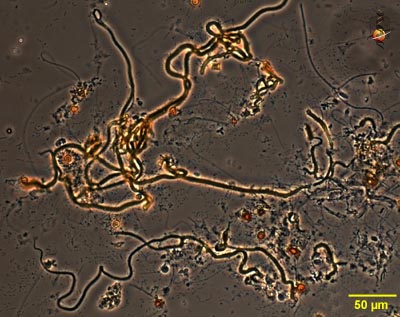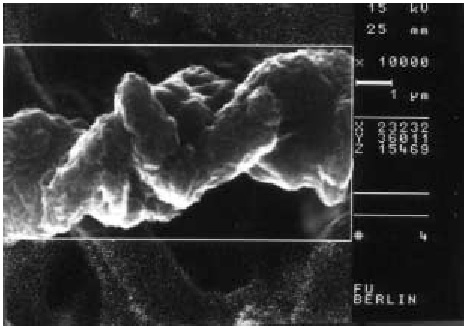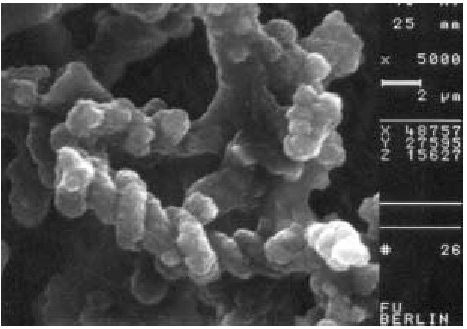Gallionella
A Microbial Biorealm page on the genus Gallionella

Classification
Higher order taxa:
Bacteria; Proteobacteria; Betaproteobacteria: Nitrosomonadales; Gallionellaceae
Species:
Gallionella ferruginea
|
NCBI: Taxonomy Genome |
Description and Significance
Gallionella ferruginea is an iron-oxidizing chemolithotrophic bacterium that has been found in a variety of different aquatic habitats. It has been known for 150 years that these bacteria play an important part in oxidizing and fixing iron.
Genome Structure
Gallionella ferruginea has not been sequenced at this time.
Cell Structure and Metabolism
Gallionella ferruginea is an iron-oxidizing, chemolithotrophic bacteria that lives in low-oxygen conditions. The bacteria oxidize and fix iron, but in order to get energy out of this process, they must live in a relatively specific environment that contains "reduced iron, the right amount of oxygen and sufficient amounts of carbon, phosphorus and nitrogen" (Halbach, Koschinsky, and Halbach 2001). G. ferruginea oxidizes dissolved iron, therefore removing it from the water and producing an insoluble precipitate of ferric hydroxide. In active, deep sea hydrothermal venting sites, most of the iron mineralizations that come from the emitted hydrothermal fluids are massive sulphides. Other iron hydroxide precipitates, such as jasper, also can be found in submarine hydrothermal fields that have relic filamental structures that indicate bacterial origin.
The bacterium is a kidney-shaped mycoplasmodial cell body that lacks peptidoglycan in its cell wall, which normally gives the wall its particular rigidity. This body has a single elongated stalk that is made from "numerous helically wound, uniquely mineralized fibrils [extending] outward from the convex side" (Ridgeway, Means, and Olson 1981). This stalk structure protrudes from the concave side of the cell, and is dependent on population development, pH, and redox conditions. These stalks are generally covered in bacteriogenic iron oxide precipitate which give it a redish-brown color (Anderson and Pedersen 2003).
Ecology
Gallionella ferruginea has been found in many different types of habitats such as freshwater ferruginous mineral springs, shallow brackish waters, marine hydrothermal shallow water environments, and active, deep sea hydrothermal venting sites as well as in soil environments assocated with iron (Halbach, Koschinsky, and Halbach 2001) There they form biofilms by interacting in a network of bacteria.
References
General:
- Anderson, C. R. and K. Pedersen. 2003. "In situ growth of Gallionella biofilms and partitioning of lanthanides and actinides between biological material and ferric oxyhydroxides." Geobiology. Blackwell Publishing Ltd. (169-178)
- Halbach, M., A. Koschinsky, and P. Halbach. 2001. "Report on the discovery of Gallionella ferruginea from an active hydrothermal field in the deep sea." InterRidge News, vol. 10, no. 1. (18-20)


